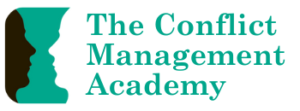I recently ran a REAL Masterclass exploring the concept of High Conflict Personalities (HCPs). Many of the participants were looking for some quick fixes and easy tools to use when they came across HCPs in their practice. What they instead discovered was that this desire for a simple solution is in fact one of the inherent problems with the HCP concept! Here’s an overview of what we discussed.
The term HCP was coined by Bill Eddy, from the High Conflict Institute, and he offers training for working with HCPs in mediation and how to “coach” them (although I don’t agree that the process he uses is actually coaching, it is rather training and directing).
Eddy defines an HCP as someone who demonstrates a pattern of behaviour which repeats and repeats in their lives in many situations, and which includes:
Preoccupation with blaming others (especially intimate others and people in positions of authority).
All-or-nothing thinking and solutions.
Unmanaged or intense emotions.
Extreme behaviour or threats.
In my opinion, there are some significant problems with the concept of the HCP and the suggested “new ways” for mediating people who are identified by practitioners as falling within Eddy’s definition.
Some of the main criticisms of the concept are set out in the infographic below.

In addition, too many of the behaviours that are typically “labelled” as those of HCPs are also behaviours that are typically of people who are neurodivergent, people who have experienced trauma, or people from different cultural backgrounds.
For example, people who have experienced trauma may demonstrate behaviours including:
Forgetfulness / memory issues
Difficulty concentrating
Tight, strained voice
Out-of-sync with flow of conversation, tangential speech
Hypervigilance
Unprovoked hostility
Negative about self, others, future
These things could easily put the person at risk of being labelled an HCP.
Some people who are neurodivergent may demonstrate behaviours including:
Difficulty with emotions (own and others)
Black and white thinking
Difficulty thinking about things in a different way
Difficulty with executive functioning
Impulsive, interrupting, poor self-regulation
Extreme focus, can get ‘hung up’ on one thing
Extreme sensitivity to being criticised
Easily triggered into fight or flight
These things could easily put the person at risk of being labelled an HCP.
Some people from diverse cultural backgrounds may demonstrate behaviours including:
Differences in communication styles and emotional expression
Different ways of interacting (e.g. talking over vs turn taking)
Different ideas about what’s relevant (e.g. history)
Different ideas about how decisions should be made
Different ideas about legitimacy and power
Different ideas about personal boundaries and privacy.
These things could easily put the person at risk of being labelled an HCP.
There’s a real risk that diverse individuals who don’t conform to our expectations about “reasonable” (sometimes “neurotypical”) behaviours can be simply labelled HCPs, rather than practitioners recognising that there may be many different reasons for the behaviour.
Eddy suggests that even if you are wrong, and your client is not an HCP, you can still use the New Ways approach as it has benefits for people with a wide range of (what he calls) “mental disorders”.
However, while there may possibly be some benefits in using the model, there are significant risks, particularly if it turns out that your client is neurodivergent, or someone who has experienced trauma.
For example, the rigid process could exacerbate some of the challenges faced by someone who is neurodivergent. It could re-traumatise a client who desperately needs a sense of control and autonomy. Even putting aside the worst case scenario downsides of the process, it is also rarely the best way of supporting people to engage in conflict effectively. There are usually ways that a process can be co-designed with the people involved that supports them to engage in a way that works for them, and the others involved.
Tammy Lenski wrote a fabulous article about the problems with the concept of HCPs, in which she states:
“Let’s be very cautious about gratuitously equating someone who disagrees strongly, emotionally, and even frequently, with having a personality disorder.” Tammy Lenski
Lenski suggests that when you are faced with someone whom you are tempted to label as a HCP, you ask yourself is this really about:
The fact that this is higher conflict than you are comfortable with?
Your need to blame?
Your low understanding?
Your limited skills?
I think it’s time that we critically reflect on the dangers of labelling and lumping everyone with challenging behaviours in conflict as an HCP, and instead develop the knowledge and skills to engage with people in respectful and flexible ways to support them to be at their best.
Read Tammy Lenski’s article here: https://tammylenski.com/high-conflict-personality/


Hi Sam, Thank you for sharing this thought provoking analysis of the HCP theory. I agree that labels are limiting and a trap for our biases. However, I think the litmus test for me must be the person’s degree of insight. Surely, this is the personality trait or behaviour which will determine whether a person can successfully manage a transformative process of conflict change. If one has insight and a willingness to change, then despite one’s emotional reactivity there is an opportunity to eventually adapt and evolve. Where does it leave the practitioner if it becomes evident that their client lacks any self-awareness of their maladaptive behaviours and doesn’t believe they need to change? Or as Bill Eddy says the client believes it’s “all the other person’s fault?” I have experienced this all of nothing thinking in a dispute and I was unaware that it was possible to blame another person 100% for the break down in relations. As the saying goes, it takes two to tango. Perhaps Eddy’s New Ways model, though flawed as you describe, is still a lens for approaching some client’s conflicts when facilitative and transformative approaches would ordinarily fail?